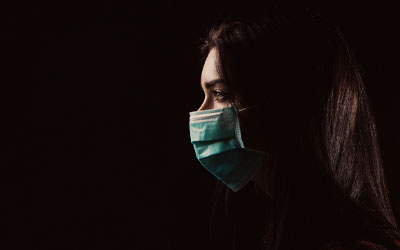Summary
The world continues to attempt to control the spread of Coronavirus (SARS-CoV-2, COVID-19), which was declared a global pandemic or indirect immunity by the World Health Organization (WHO) on March 11, 2020. Over 100 vaccines are currently in development, and none of them have been approved by the U.S. Food and Drug Administration (FDA).
Realistically, commercial availability of a vaccine is likely at least 12 to 18 months away. However, treatment of the disease currently centers on managing symptoms and supportive care for patients, while pharmaceutical companies, universities, and government agencies around the world are working to develop these therapies. This document is intended to provide information regarding therapies and vaccines in development for COVID-19.
Highlights:
- Coronavirus disease 2019 (COVID-19) is an infection from a new strain of coronavirus that has been associated with respiratory symptoms, including progression to acute respiratory distress syndrome (ARDS) and death in some.
- Currently, no approved vaccines treat or prevent COVID-19.
- More than 100 vaccines are in early clinical development, with several options expected to reach clinical trials within months.
- Experimental use of vaccines deemed safe and effective may be rolled out to high-risk groups, such as healthcare workers, as early as late summer of 2020.
- Commercial availability of a vaccine is still likely at least 12 to 18 months away. Typically, a vaccine takes 10 years to develop. However, the COVID-19 pandemic is challenging the science, scale, and speed at which traditional vaccines are being developed.
- There are a vast array of compounds in early trials being evaluated for the treatment of COVID-19. The promising options will move rapidly through the FDA approval process.
- Another approach is to evaluate currently available therapeutic options to assess their effectiveness in treating and preventing the disease. Some data surrounding SARS and MERS coronaviruses have led investigators to a handful of products, hoping the similarity between these viruses and SARS-CoV-2 will lead to treatment options.
Vaccines
Vaccines are important to prevent infection and limit the spread of dangerous diseases. Immunity to a contagious disease often is achieved after successfully overcoming an infectious pathogen and developing T-lymphocytes or “memory cells” against it. Whenever that specific pathogen is encountered again, T-lymphocytes recognize it and activate B-lymphocytes to produce antibodies that prevent the disease from reoccurring. By introducing small amounts of the pathogen’s proteins, vaccines generate an immune response without causing disease or infection. When a high percentage of the population develops immunity to a pathogen, either through recovering from infection, being vaccinated or a combination of both, the infection is less likely to spread from person to person. The resulting “community” or “herd immunity” is central to protect vulnerable patients, such as those who are immunocompromised, infants, and the aging population.
FDA and Government Actions
To help expedite the availability of therapies for COVID-19, the FDA has loosened the process for vaccines to enter the market. An Emergency Use Application (EUA) can be issued to permit the use, based on scientific data, of medical products that may be effective for the diagnosis, treatment or prevention of a disease or condition when the U.S. Department of Health and Human Services (HHS) determines that a public health emergency has a significant potential to affect national security or the health and security of U.S. citizens. Recently, HHS issued a EUA to increase the availability of additional diagnostic tests for the SARS-CoV-2 virus, and the production of ventilators.
The Search for Coronavirus Treatments
While there are currently no therapies approved by the FDA for the treatment or prevention of COVID-19, pharmaceutical manufacturers, universities and government agencies are casting a wide net looking for effective therapies to treat and/or prevent the disease. SARS-CoV-2 is a coronavirus similar to viruses that cause Middle Eastern Respiratory Syndrome Coronavirus (MERS-CoV) and Severe Acute Respiratory Syndrome Coronavirus (SARS-CoV), previously have been associated with the development of severe illness. Therefore, many investigated compounds for treating MERS and SARS are now being evaluated for COVID-19.
Vaccines in Development
Several vaccines are in early-phase development to protect against COVID-19. Once they reach human clinical trials, data will be collected over at least six months to determine if the vaccines are both safe and effective for preventing infection with SARS-CoV-2. FDA will accelerate development for the more promising vaccines through its approval process. However, while the first vaccine is not expected to be commercially available for at least 12 months, experimental use products that show promise of being safe and effective could be rolled out to high-risk groups, such as healthcare professionals, as early as the summer of 2020. For comparison, typical vaccine development can take 10 years as the product advances from the lab, through animal testing and finally into the multiple stages of human clinical trials that support the safety and efficacy of the vaccine. The COVID-19 pandemic is challenging the science, scale and speed at which the vaccines are being developed.
Investigational COVID-19 Vaccines
| Vaccine | Manufacturer | Route | Status |
|---|---|---|---|
| mRNA-1273 | Moderna | Intramuscular (two doses) | Phase 2 |
| ChAdOx1 nCoV-19 | Oxford/AstraZeneca | Intramuscular | Phase 2 |
| BNT-162 | Pfizer/BioNTech | Unspecified | Phase 2 |
| INO-4800 | Inovio | Intradermal | Phase 1 |
| Coronavirus Vaccine | Altimmune | Intranasal (one dose) | Preclinical |
| Coronavirus Vaccine | CureVac | Intramuscular (one to three doses) | Preclinical |
| Coronavirus Vaccine | Janssen | Unspecified | Preclinical |
| COVID-19 S-Trimer | GlaxoSmithKline/Clover | Unspecified | Preclinical |
| NVX-CoV2373 | Novavax | Unspecified | Preclinical |
| Coronavirus Vaccine | Sanofi/GlaxoSmithKline | Unspecified | Preclinical |
Novel Drugs in Development
There are multiple therapies in early-phase development for the treatment of COVID-19. Remdesivir, has rapidly advanced into phase 3 clinical trials for patients with moderate or severe COVID-19 as well as hospitalized patients with mild or moderate COVID-19. Table 2 highlights some of the novel drugs in development for COVID-19. Due to the large number of products being screened for possible use, the table is not intended to be an exhaustive list of potential therapies. Rather, we have highlighted some of the more promising agents progressing through the development process.
| Drug | Manufacturer | Mechanism | Route | Status |
|---|---|---|---|---|
| remdesivir | Gilead | Broad-spectrum antiviral | IV infusion (5 or 10 days) | Phase 3* |
| tradipitant | Vanda Pharmaceuticals | neurokinin-1 receptor antagonist | Oral (twice daily x 14 days) | Phase 3 |
| favipiravir | FujiFilm Toyama Chemical | RNA polymerase antiviral | Oral (twice daily x 7 days) | Phase 3 |
| leronlimab | CytoDyne | CCR5 viral entry inhibitor | Subcutaneous | Phase 3 |
Existing Drugs in Development
Several existing medications that are currently approved for other uses are being evaluated for efficacy in the treatment of COVID-19. These drugs may be used alone or in combination with other drugs to treat COVID-19. Table 3 shows some of the existing drugs that are in development for COVID-19. However, the use of these products for COVID-19 is still considered investigational as ongoing clinical trials have yet to demonstrate whether or not the products are proven to be both safe and effective for treating COVID-19.
| Drug | Manufacturer | Mechanism | Route | Status |
|---|---|---|---|---|
| tocilizumab (Actemra®) | Genentech | Interleukin-6 inhibitor | IV infusion | Phase 3* |
| sarilumab (Kevzara®) | Sanofi/Regeneron | Interleukin-6 inhibitor | Subcutaneous | Phase 3* |
| chloroquine | Generics | RNA polymerase inhibitor | Oral | Phase 3 |
| hydroxychloroquine (Plaquenil®) | Concordia/Generics | RNA polymerase inhibitor | Oral | Phase 3 |
| hydroxychloroquine + azithromycin | Concordia/Generics | RNA polymerase inhibitor + macrolide antibiotic | Oral | Phase 3 |
| lopinavir/ritonavir (Kaletra®) | AbbVie | Protease inhibitor/Booster | Oral | Phase 3 |
| dexamethasone | Generics | Glucocorticoid | Oral or IV | Phase 3 |
*EUA = Emergency Use Authorization
Updates
| Date | Vaccine | Comment |
|---|---|---|
| 05.18.2020 | mRNA-1273 (Moderna) Phase 1 Results | Positive interim data was announced in a phase I study sponsored by the National Institute of Allergy and Infectious Diseases (NIAID), part of the National Institutes of Health (NIH). The study evaluated safety and immunogenicity for a total of 45 patients from 18 to 55 years of age. Participants were given one of three different intramuscular (IM) doses; 25µg, 100µg, and 250µg. Patients were given two doses; the first on day 1 followed by the second dose on day 29. Upon receiving the second injection, each patient will be monitored for an additional 12 months. A dose dependent immune response was seen in all three doses and COVID-19 specific antibodies were detected by day 15. By day 43, antibody results for the first four patients, in both the 25µg and 100µg, showed neutralizing antibody titers at or above levels generally seen in someone who has recovered from a COVID-19 infection. Ongoing studies will be amended to include a 50µg dose and include patients 55 years of age and older. The vaccine was generally safe and well tolerated. One participant at the 100µg dose experienced grade 3 redness at the injection site. The most serious adverse events occurred when three patients, all whom received 250µg dose, had grade 3 systemic symptoms. Grade 3 systemic symptoms occurred following the second injection and were self-limiting, resolving over time. An additional animal study was also provided to show replication of the virus was inhibited within the lungs of mice and provided full protection. Phase II trials are expected to begin soon while phase III trial protocols are finalized. The phase III trial is expected to start in July 2020. |
| 06.30.2020 | INO-4800 (Inovio) Phase 1 Results | Preliminary results were announced following two phase I studies, which Inovio plans to publish following peer review. In the trial, 40 healthy adults 18-50 years of age received two doses 28 days apart. Each patient had either a 1mg or 2mg dose via intradermal administration using the Inovio CELLECTRA 2000®. Overall 10 individuals reported adverse events that were localized and considered grade 1 injection site reactions. Immune response rates were observed in 94% of eligible participants analyzed, although levels for binding antibodies, neutralizing antibodies, and T-cell response were not reported. The company also reported that INO-4800 prevented viral replication in the lungs of mice and is undergoing similar testing in ferrets as part of the non-human primate (NHP) challenge for the U.S. Operation Warp Speed program. Inovio plans to increase its phase I study to include patients over 50 years of age and is seeking regulatory clearance for phase 2/3 trials this summer. |
| 07.01.2020 | BNT-162 (Pfizer/BioNTech) Phase 1/2 Results | Preliminary results of a placebo-controlled, observer-blind, dose-escalation phase 1/2 study have been announced for BNT-162 (Pfizer/BioNTech). BNT- 162 is a lipid nanoparticle mRNA vaccine with a modified nucleoside. Forty-five patients between 18 and 55 years of age were assigned to dose arms of 10µg, 30µg, 100µg or placebo. The 100µg dose was given at day 1, only; the others were given at days 1 and 21. Due to severity of pain with the 100µg dose it was not repeated. Benefits were observed through day 35. Neutralizing antibodies and receptor binding domain (RBD) IgG levels showed a dose-dependent increase at each dosage level and upon the second injection. Two weeks after the second dose, plasma concentrations of RBD binding IgG and neutralizing antibodies from study participants were compared to samples of convalescent plasma from patients who have recovered from COVID-19. After the two-dose regimens the RBD-binding IgG concentrations were eight to 50 times greater and neutralizing antibodies were 1.8 to 2.8 times greater in plasma of vaccinated individuals. Although the 100µg cohort was not repeated, it provided no considerable benefit following the first dose. Pain at the injection site was the most common adverse event (AE) with all actively treated patients reporting pain with one or both injections. Systemic AEs included fever, chills and body aches, which all resolved within seven days. Except for one severe case of pain at the 100µg dose, all AEs were considered mild to moderate. Investigators plan to monitor for safety and efficacy for six to 24 months. Assuming that natural infection provides immunity to COVID-19, then the stronger vaccine response also could provide protection that warrants further investigation. |
Sources:
Centers for Disease Control and Prevention. Understanding how vaccines work. https://www.cdc.gov/vaccines/hcp/conversations/downloads/vacsafe-understand-color-office.pdf. Last updated July 2018. Accessed April 17, 2020.
INOVIO initiates phase 1 clinical trial of its COVID-19 vaccine and plans first dose today [press release]. Plymouth Meeting, PA; INOVIO Pharmaceuticals; April 6, 2020. http://ir.inovio.com/news-and-media/news/press-release- details/2020/INOVIO-Initiates-Phase-1-Clinical-Trial-Of-Its-COVID-19-Vaccine-and-Plans-First-Dose-Today/default.aspx. Accessed April 17, 2020.
Cohen J. Chinese researchers reveal draft genome of virus implicated in Wuhan pneumonia outbreak. Science. https://www.sciencemag.org/news/2020/01/chinese-researchers-reveal-draft-genome-virus-implicated-wuhan- pneumonia-outbreak. Jan. 11, 2020. Accessed April 17, 2020.
Le, T. T., Andreadakis, Z., Kumar, A., Román, R. G., Tollefsen, S., Saville, M., & Mayhew, S. (2020, April 9). The COVID-19 vaccine development landscape. Retrieved April 20, 2929, from https://www.nature.com/articles/d41573-020-00073-5
Moderna, Inc. (2020, March 16). Moderna announces first patient dosed in NIH-led phase I study of mRNA vaccine (mRNS- 1273) against novel Coronavirus [Press release]. Retrieved from https://investors.modernatx.com/news-releases/news- release-details/moderna-announces-first-participant-dosed-nih-led-phase-1-study. Accessed April 20, 2020.
Inovio, Inc (2020, June 30). INOVIO Announces Positive Interim Phase 1 Data For INO-4800 Vaccine for COVID-19. [Press release]. Retrieved from http://ir.inovio.com/news-releases/news-releases-details/2020/INOVIO-Announces-Positive- Interim-Phase-1-Data-For-INO-4800-Vaccine-for-COVID-19/default.aspx. Accessed June 30, 2020.
Pfizer, Inc (2020, July 1). Pfizer and BioNTech Announce Early Positive Data from an Ongoing Phase 1/2 study of mRNA- based Vaccine Candidate Against SARS-CoV-2. [Press release]. Retrieved from https://www.pfizer.com/news/press- release/press-release-detail/pfizer-and-biontech-announce-early-positive-data-ongoing-0 Accessed July 1, 2020
CORONAVIRUS RESOURCES
EPIC RECOMMENDATIONS
Currently, no vaccines are FDA approved for the prevention of SARS-CoV-2 infections. According to the Centers for Disease Control and Prevention (CDC), the best mitigation is avoidance through social distancing, thoroughly washing hands, covering your mouth and nose while in public, covering coughs or sneezes, disinfecting frequently touched surfaces daily, and isolating those with confirmed or suspected infections for at least 14 days.
Once a vaccine is approved and commercially available, we will provide our updated recommendations.
Related Content
Products
Employee Benefits Consulting
Our dedicated benefits team is focused on delivering better outcomes – to both your benefits program and ...
Products
Pharmacy Solutions
Our Pharmacy Consulting Practice helps companies navigate the unique complexities of expertly managing the ...
Products
Analytics
We leverage our access to insurance market information and invest significant resources in modeling ...



